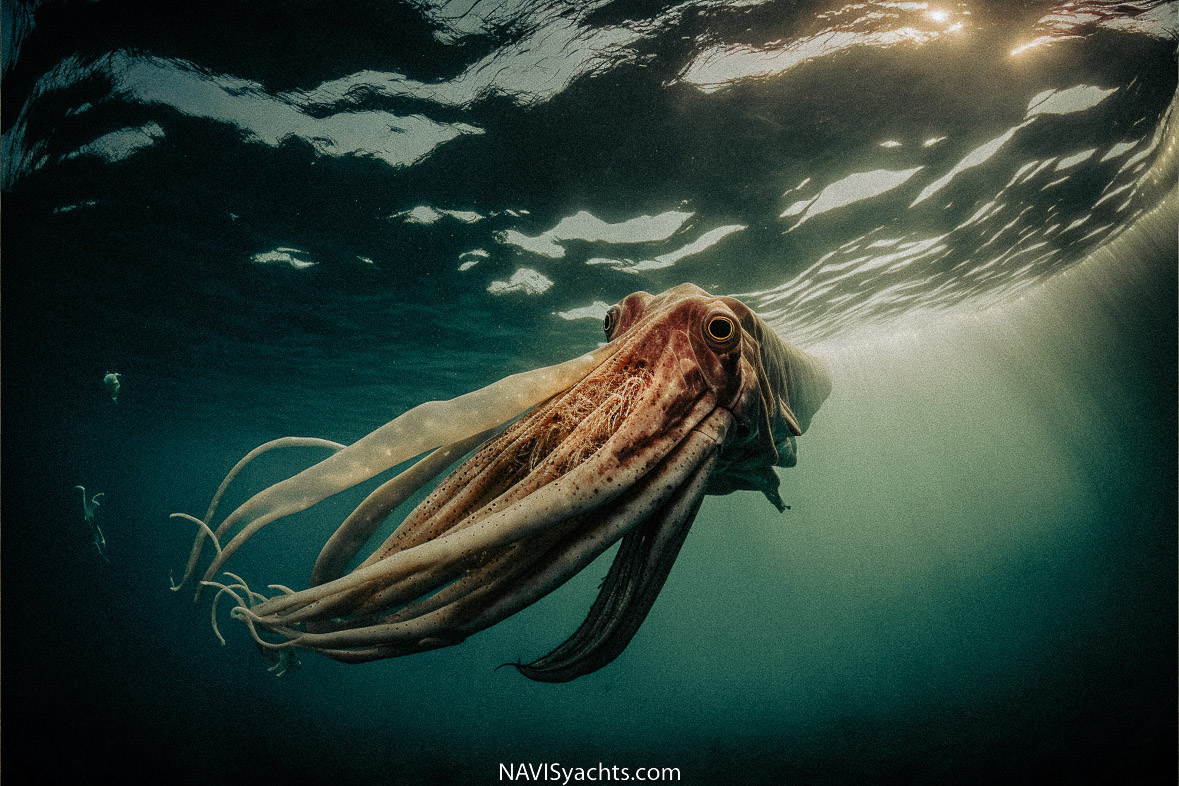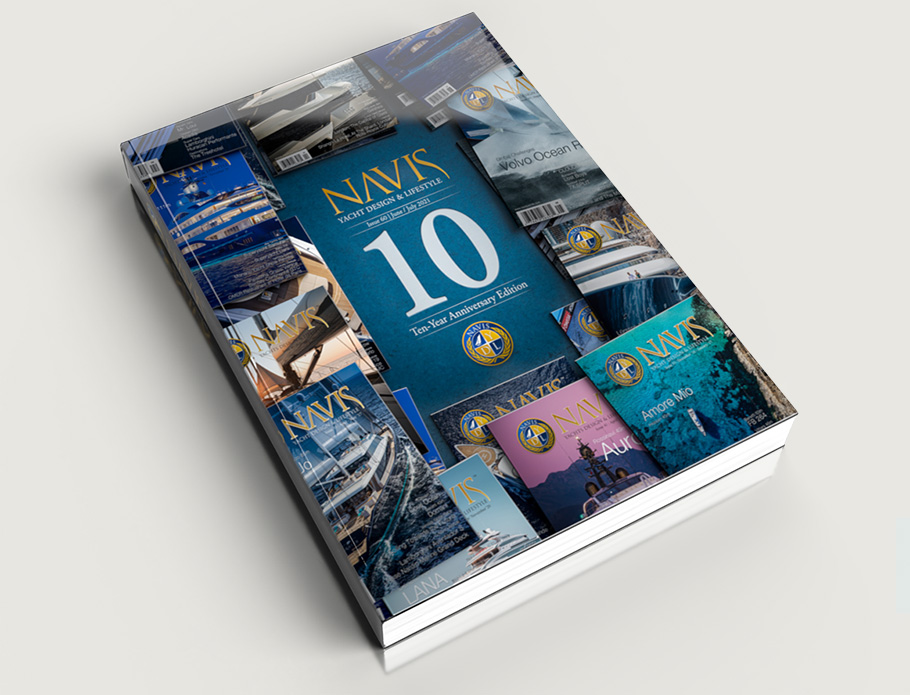Footage from January 2023 shows two scuba divers coming face-to-face with a rare giant squid on the coast of Japan.
Yosuke Tanaka and his wife Miki, who operate a diving business in Toyooka city in the Hyogo region of Japan, found an eight-foot-long squid while diving off the western coast of the country. The couple was tipped off about the squid by a fishing equipment vendor who saw it in a bay, and they decided to investigate.
Upon reaching the squid, which is a member of the molluscan class Cephalopoda, the divers found it floating near a rocky shoreline. Yosuke Tanaka told the Japan Times that he was amazed by the size of the creature.
“It was an enormous squid,” he said. “I could see its tentacles moving. I thought it would be dangerous to be grabbed hard by them and taken off somewhere.”
In the footage, the Tanakas can be seen approaching the squid cautiously before Miki Tanaka captures it on camera. The squid does not seem to be agitated by the divers' presence and is even seen reaching out towards them at one point.
After a few minutes, the couple decides to leave the squid to its own devices and swim back to their boat.
This is not the first time that a giant squid has been spotted in the waters off Japan. In December 2015, another divers' group spotted a similar creature in the same region.
Colossal squids are typically found in deep waters around the world and can grow to be up to 66 feet in length. They are predatory mollusks and feed on other deep-sea creatures such as fish, cephalopods and crustaceans. They are estimated to be the largest invertebrate on Earth. Many have been found around the coasts of Japan, New Zealand, and the US, suggesting they may live in cool, temperate areas of the ocean.
A History of Human Encounters with Giant Squids
The giant squids, also known as Architeuthis dux, is one of the deep ocean's most elusive and mysterious creatures. The first recorded encounter with a giant squid dates back to the 16th century, but stories and legends of massive, tentacled sea monsters have existed for centuries.
In the early 1500s, the Norwegian bishop and historian Erik Pontoppidan wrote "The Natural History of Norway," describing a sea serpent with a length of up to 200 feet. While this description is likely an exaggeration, Pontoppidan could have described a colossal squid or a similar cephalopod.
"Architeuthis dux, the giant squid, is one of the most enigmatic creatures on the planet, a legendary beast that has been the subject of myth and speculation for centuries. But as we continue to explore the vast, uncharted depths of the ocean, we are starting to uncover the secrets of this elusive creature and the role it plays in the complex web of life in the deep sea." - From "The Search for the Giant Squid" by Richard Ellis.
The first scientifically documented encounter with a colossal squid occurred in the late 18th century. In 1772, Danish naturalist and explorer Peter Ascanius captured a small specimen of a squid near the Faroe Islands. He described the creature as having eight arms, two longer tentacles, and a body that was "as soft as a jelly."
Not until the late 19th century did humans witness the first full-sized squid. In 1873, a group of fishermen off the coast of Newfoundland found a dead colossal squid tangled in their fishing nets. The squid was estimated to be about 18 feet long, and its body was preserved for scientific study.
Over the next few decades, more sightings and encounters with giant squid were reported. In 1896, another squid attacked a fishing boat near the Falkland Islands, leaving only a few tentacles behind. In 1925, a giant squid was filmed for the first time by a team of scientists off the coast of the Azores. In 1953, a colossal squid washed ashore in New Zealand, allowing scientists to study the creature up close.
Despite these encounters, much about these squids remains a mystery. The creature is believed to live at depths of up to 3,000 feet, making it difficult to study in its natural habitat. In recent years, scientists have used remote-operated vehicles and other technology to capture images and footage of large squids in the wild, shedding new light on these elusive creatures.
Overall, the history of human encounters with this type of squids is fascinating and spans centuries. Despite the fact that there is still a lot to learn about these enigmatic creatures, our meetings with them have contributed to our comprehension of the deep sea and its inhabitants.
The Groundbreaking Discovery: Dr. Kubodera's Encounter with a Live Giant Squid in its Natural Habitat
A leading authority on the giant squids, Dr. Tsunemi Kubodera is a distinguished Japanese marine biologist. In 2004, Dr. Kubodera made history by capturing the first-ever images of a live giant squid in its natural habitat.
The encounter occurred off the Ogasawara Islands coast, about 600 miles south of Tokyo. Dr. Kubodera and his team had been tracking the giant squids for months, using a baited line to lure it to the surface. On one fateful day in September, they finally succeeded in capturing the creature on camera.
The footage, which was captured using a specially designed submersible camera, shows the giant squid attacking the bait with its long tentacles, revealing for the first time this elusive creature's incredible power and agility. The squid is estimated to have been about 26 feet long, although its exact size is difficult to determine due to the murky depths in which it was found.
Dr. Kubodera's discovery was a landmark achievement in marine biology, and it has helped shed new light on the behavior and ecology of the colossal squid. Scientists and researchers worldwide have widely studied the footage, inspiring a new generation of explorers to venture into the deep sea in search of new discoveries.
The groundbreaking experience of Dr. Kubodera encountering the squid has marked a significant moment in the history of marine science and is expected to be remembered as one of the most noteworthy scientific accomplishments of the 21st century.




